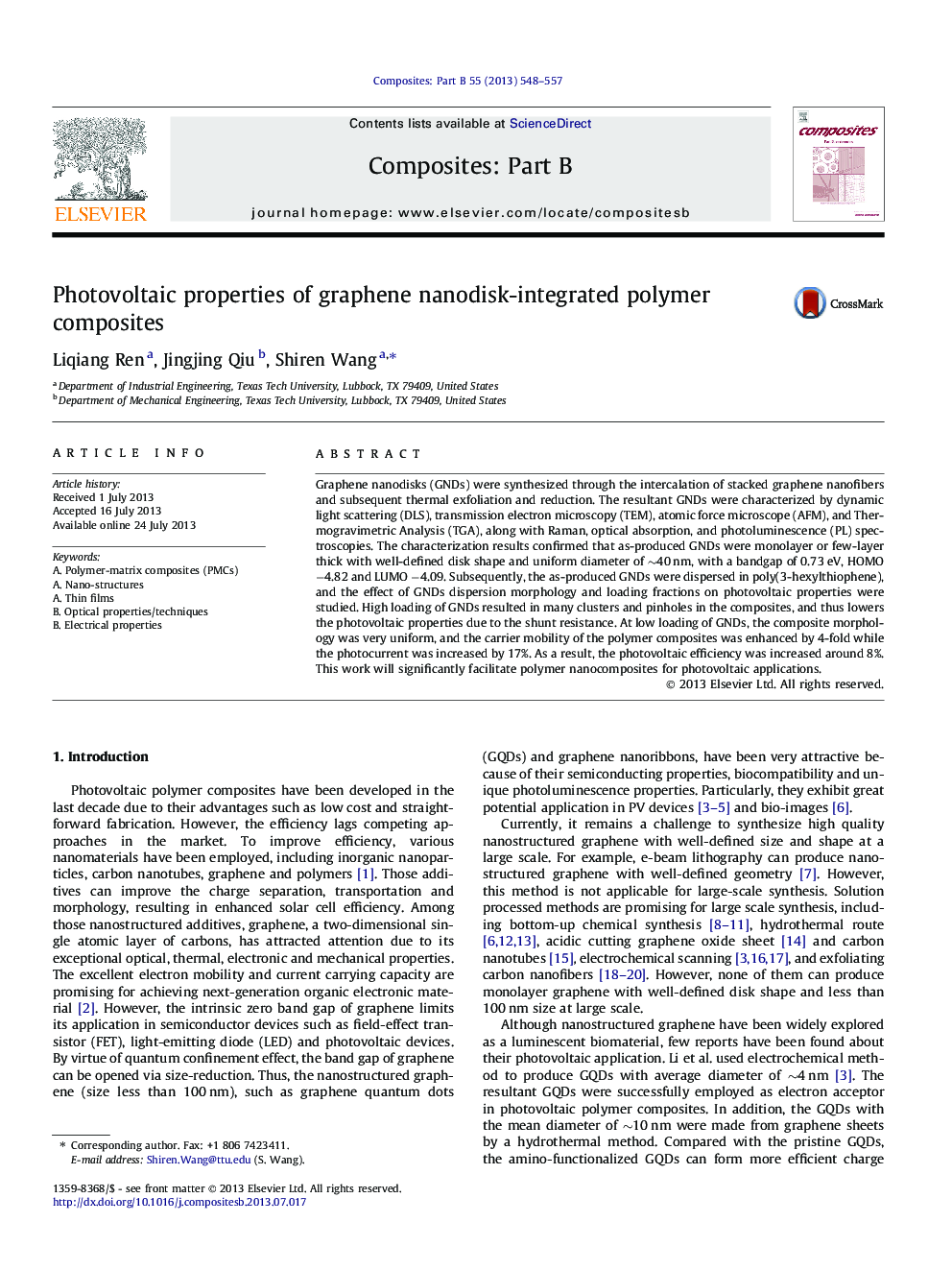| Article ID | Journal | Published Year | Pages | File Type |
|---|---|---|---|---|
| 818115 | Composites Part B: Engineering | 2013 | 10 Pages |
Graphene nanodisks (GNDs) were synthesized through the intercalation of stacked graphene nanofibers and subsequent thermal exfoliation and reduction. The resultant GNDs were characterized by dynamic light scattering (DLS), transmission electron microscopy (TEM), atomic force microscope (AFM), and Thermogravimetric Analysis (TGA), along with Raman, optical absorption, and photoluminescence (PL) spectroscopies. The characterization results confirmed that as-produced GNDs were monolayer or few-layer thick with well-defined disk shape and uniform diameter of ∼40 nm, with a bandgap of 0.73 eV, HOMO −4.82 and LUMO −4.09. Subsequently, the as-produced GNDs were dispersed in poly(3-hexylthiophene), and the effect of GNDs dispersion morphology and loading fractions on photovoltaic properties were studied. High loading of GNDs resulted in many clusters and pinholes in the composites, and thus lowers the photovoltaic properties due to the shunt resistance. At low loading of GNDs, the composite morphology was very uniform, and the carrier mobility of the polymer composites was enhanced by 4-fold while the photocurrent was increased by 17%. As a result, the photovoltaic efficiency was increased around 8%. This work will significantly facilitate polymer nanocomposites for photovoltaic applications.
